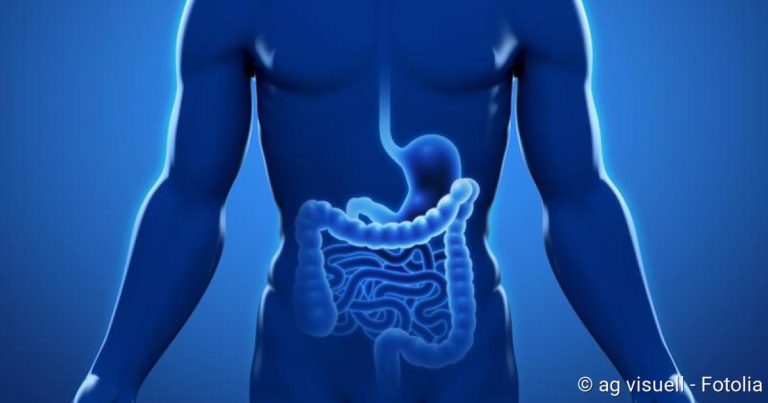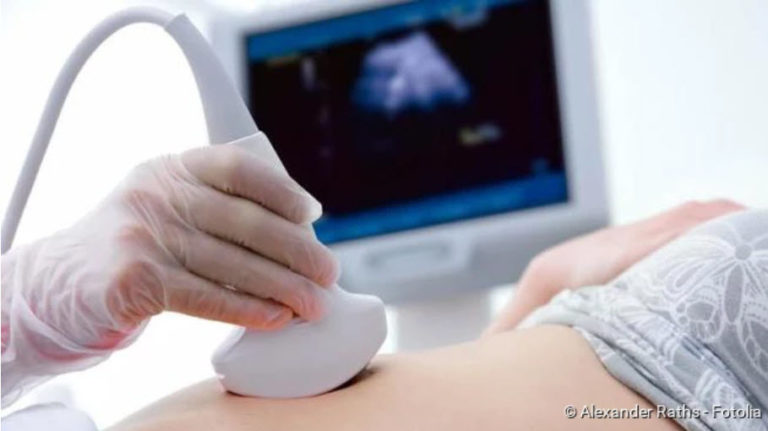Myocardial infarction (heart attack): warning signs, causes, therapy
Myocardial infarction (heart attack): warning signs, causes, therapy
A heart attack (myocardial infarction) occurs when a blood vessel of the heart muscle (coronary artery) closes. The muscle is then cut off from the oxygen supply and can no longer do its work. A heart attack can be life threatening! It is therefore important to recognise the symptoms of a heart attack as early as possible. Here you can read everything you need to know about warning signals, causes, treatment options and first aid for heart attacks.

Myocardial infarction: short overview
- Typical symptoms: severe pain in the left chest area/behind the breastbone, shortness of breath, anxiety/feeling of anxiety; attention, the symptoms in women can be different (dizziness, vomiting) than in men!
- First aid: Call an emergency doctor, calm the sick, elevate the upper body, loosen tight clothing (tie, collar, etc.), in case of unconsciousness and lack of breathing immediately resuscitate!
- Risk factors: High blood pressure, high cholesterol, overweight, little exercise, diabetes, smoking
- Cause: usually a blood clot that blocks a coronary artery
- Important research: ECG, heart ultrasound, blood tests, cardiac catheterization
- Treatment options: Dilatation of the narrowed heart vessel (balloon dilatation) and installation of a vascular support (stent) in the course of PTCA, dissolution of the blood clot with medication (lysis therapy), other medication, bypass surgery
- Prevention: healthy lifestyle, regular exercise, healthy body weight
Heart attack: symptoms
In case of a heart attack, there is no time to lose. The earlier it is detected and treated, the greater the chances of survival. That is why you should call the emergency number even at the slightest suspicion and the first symptoms of a myocardial infarction – even at night or on the weekend!
However, in order to be able to react quickly, you need to know the heart attack symptoms of men and women. But be careful: the typical signs do not always appear. In addition, the heart attack symptoms of a woman are often different from those of a man.
Physical exercise makes you healthy even after a heart attack! But: shortly after a heart attack, the heart muscle is not yet fully functional and sensitive. Since performance depends on many factors – such as the size of the infarct – there is no rule for everyone. It is best to talk to your doctor and do not do sports alone at the beginning, but in coronary sports groups under medical supervision.
After the first heart attack, the risk of having another one is high. Therefore, you would do well to minimize all known risk factors. Take care of your blood pressure, watch your blood sugar levels. Very effective is the lowering of cholesterol, regardless of whether the level is elevated or in the reference range.
Those affected are often not aware of how important their lifestyle is! A healthy diet is highly effective in this respect: a predominantly vegetarian diet not only influences the known risk factors, but also has an independent beneficial effect on the blood vessels. If you then take daily exercise, give up smoking and avoid the underestimated factor of stress, you do a lot for yourself and your heart.
You can recognize a heart attack by this
A classic sign of a heart attack (“heart attack”) is sudden severe pain in the chest, either in the front left chest area or behind the breastbone. The pain can be pressing, stabbing or burning. Sometimes they also radiate into other regions of the body. Thus, pain in the arm (especially on the left), upper abdomen, back, shoulder or jaw can also be a warning signal for heart attack.
Other typical heart attack symptoms are:
- Anxiety or tightness: People often describe this strong feeling of constriction as “as if an elephant were standing on my chest”.
- Feeling of anxiety up to the fear of death: The strong fear is often accompanied by cold sweat, a pale complexion and cold skin.
- sudden severe shortness of breath, unconsciousness or severe dizziness: these unspecific symptoms can have many causes, including a heart attack. They occur more often in women.
- Nausea and vomiting: These symptoms, which occur in many diseases, are also a possible sign of a heart attack, especially in women. This is especially true if the affected persons have never experienced such complaints to this extent before.
The signs of a heart attack also depend on which coronary vessel is affected. For example, occlusions of the right coronary artery often lead to a so-called posterior wall infarction. They are more likely to cause discomfort in the upper abdomen. If, on the other hand, the left coronary artery is closed, the result is an anterior wall infarction. Here the pain is more localized in the chest area.
Some symptoms indicate a heart attack. Particularly sudden, severe pain in the chest is a typical sign of a heart attack. But be careful: Not all people who suffer a heart attack have the typical symptoms!
In some cases a heart attack is painless. Such a “silent infarction” occurs particularly often in patients with diabetes mellitus (diabetes) and in people of advanced age.
Differing heart attack symptoms in women
The symptoms described above do not always appear with heart attacks. Women often have a different complaint pattern. While the majority of affected men feel the classic chest pain, it occurs in only about a third of women. In addition, patients more often report a feeling of pressure or tightness in the chest instead of severe chest pain.
Moreover, much more often unspecific complaints are signs of heart attack in women. These include, for example, shortness of breath, nausea and vomiting as well as complaints in the upper abdomen.
Such complaints are often not immediately identified as heart attack symptoms and are not taken seriously. This is why women with heart attacks come to the clinic on average one hour later than men (calculated from the first signs of a heart attack). However, rapid medical care is essential for survival.
Heart attack: harbingers
Many heart attacks occur “out of the blue”. There was previously no evidence that the occlusion of a coronary artery was imminent.
In the other cases, omens herald the heart attack. For example, many patients suffer from coronary heart disease (CHD) decades before (unnoticed). The coronary vessels become increasingly narrow due to “calcification” (arteriosclerosis). This increasingly impairs the blood flow to the heart muscle. This can be recognised, for example, by the fact that chest pain and/or shortness of breath occur during physical exertion or mental excitement. After the end of the exercise, the symptoms disappear again within minutes.
Doctors refer to this as “chest tightness” (angina pectoris). It can develop into a heart attack at any time. This is especially true when the duration and intensity of angina pectoris attacks increase. Special caution is also required if chest pain and/or shortness of breath occur even at the slightest exertion or even at rest. These are then serious harbingers of an impending heart attack. In such cases, call the emergency doctor immediately!
Heart attack: causes and risk factors
A heart attack is usually caused by a blood clot that clogs a coronary vessel. The coronary arteries are the vessels that supply the heart muscle with blood and oxygen. In most cases, the artery in question is already narrowed beforehand by plaques on the inner wall. These consist of fats and lime. Such a hardening of the arteries (arteriosclerosis) in the area of the coronary vessels is called coronary heart disease (CHD).
The plaques can get cracked and break open. Then blood platelets (thrombocytes) immediately accumulate to close the tears. This releases messenger substances that attract further blood platelets – a blood clot (thrombus) forms. If this clot completely blocks the vessel in question, a heart attack occurs: the section of the heart muscle that is mainly supplied by this coronary vessel no longer receives enough oxygen. It can then die off within a few hours. In the worst case, the patient dies from the heart attack (acute cardiac death).
During a heart attack, narrowed coronary vessels become blocked due to deposits on the vessel wall. Often they are additionally blocked by a blood clot. The affected coronary vessel can no longer supply the heart muscle with sufficient blood and oxygen. In order to prevent the heart muscle from dying, intervention must be carried out as quickly as possible.
Coronary heart disease is considered the main cause of myocardial infarction. Only very rarely are other causes of myocardial infarction present, for example spasms of the coronary vessels.
Risk factors for heart attack
Although certain factors are not direct causes of heart attacks, they do increase the risk of heart attacks. These include above all those risk factors that favour the deposits on the inner wall of the coronary vessels described above (arteriosclerosis).
Some of these risk factors cannot be influenced. These include, for example, older age and male gender. However, there are other risk factors that can be counteracted, such as overweight and high-fat nutrition. In general, the more of the risk factors listed below a person has, the higher their risk of heart attack.
Male sex: The sex hormones apparently have an influence on the risk of heart attack. This is because pre-menopausal women have a lower risk of heart attack than men; they are then better protected by the female sex hormones such as estrogens.
Genetic predisposition: Some families have a high incidence of cardiovascular disease – the genes seem to play a role in the development of a heart attack. The risk of a heart attack is therefore hereditary to a certain extent.
Longer age: With increasing age the degree of arteriosclerosis increases. This also increases the risk of heart attack.
Nutrition: Fat-rich and energy-dense foods lead to overweight and high cholesterol levels. Both of these factors favour arteriosclerosis and thus coronary heart disease – the most common cause of heart attacks.
Overweight: It is generally unhealthy if you weigh too many kilos. This is even more true when the excess weight is concentrated on the stomach (instead of the hips or thighs): Abdominal fat produces hormones and messenger substances that increase the risk of cardiovascular diseases such as coronary heart disease and heart attacks.
Lack of exercise: Sufficient exercise has many positive effects on health. One of them: regular physical activity prevents arteriosclerosis and coronary heart disease by lowering blood pressure and improving cholesterol levels. These protective effects do not apply to motion mufflers.
Smoking: Substances from tobacco smoke promote the formation of unstable plaques that can easily break open. In addition, when smoking every cigarette the blood vessels, including the coronary arteries, constrict. Most patients who suffer a heart attack before the age of 55 are smokers.
High blood pressure: Constantly elevated blood pressure values directly damage the inner vessel walls. This promotes deposits on the walls (arteriosclerosis) and thus coronary heart disease.
Increased cholesterol: High LDL levels and low HDL levels also promote plaque formation.
Diabetes mellitus: In diabetes, the blood sugar level is pathologically elevated. In the long run, this damages the blood vessels – a risk factor for arteriosclerosis and coronary heart disease.
It is controversial whether an elevated value of the protein building block (amino acid) homocysteine is also a risk factor for heart attacks.
Myocardial infarction: treatment
Heart attack: First aid
In this way, you should provide first aid in the event of a heart attack:
- Call the emergency doctor at the slightest suspicion of a heart attack!
- Position the patient with raised upper body, for example by leaning against a wall.
- Open tight clothing, for example collar and tie.
- Calm the patient and ask him to breathe calmly and deeply.
- Do not leave the patient alone!
If the patient becomes unconscious, no breathing is detectable or no pulse is palpable, the patient is in cardiovascular arrest. Then you must act quickly and resuscitate (reanimate) the patient: Do the cardiac pressure massage or – if you are trained in it – alternately cardiac pressure massage and mouth-to-mouth resuscitation (alternately press 30 times and breathe twice). Continue resuscitation until the rescue service arrives or the patient breathes independently again.
Heart attack: What does the emergency doctor do?
The emergency doctor or paramedic will immediately check the patient’s most important parameters such as consciousness, pulse and respiration. It also connects the patient to an ECG or monitor to monitor heart rate, heart rhythm, oxygen saturation and blood pressure. The ECG is very important for the exact diagnosis of a heart attack. It can thus be determined whether it is a so-called heart attack with ST segment elevation (ST elevation myocardial infarction, STEMI) or a heart attack without ST segment elevation (non-ST elevation myocardial infarction, NSTEMI). This distinction is important for the choice of immediate therapy (see below).
The patient is supplied with oxygen via a nasal probe if the oxygen saturation is too low, as well as in the event of breathing difficulties or acute heart failure.
An access is also placed over a vein in order to be able to give the patient quickly needed medication. These could be, for example, diazepam for severe anxiety and morphine for pain. Also important are active substances (such as acetylsalicylic acid) that prevent the blood clot in the coronary vessel from becoming even larger or further clots from forming.
In addition, the emergency doctor gives the patient nitrates, usually in the form of a mouth spray. These dilate the blood vessels, reduce the oxygen requirement of the heart and reduce pain. However, nitrates do not improve the prognosis of heart attacks.
If a cardiac arrest occurs during transport to the hospital, the emergency doctor or paramedic immediately starts resuscitation with a defibrillator.
Further heart attack therapy
The further treatment of myocardial infarction essentially depends on whether it is a heart attack with ST segment elevation (STEMI) or a heart attack without ST segment elevation (NSTEMI) (see below: “Heart attack: examinations and diagnosis”):
- STEMI: The therapy of choice for these patients is acute PTCA. This means that the narrowed heart vessel is dilated by a balloon (balloon dilatation) and kept open by inserting a vascular support (stent). If necessary, STEMI may also be treated with lysis therapy (administration of drugs that dissolve the blood clot in the heart vessel). Under certain circumstances, a bypass operation may be necessary later on.
- NSTEMI: The benefit of immediate balloon dilatation (acute PTCA) is not proven here. Lysis therapy is also not indicated. Instead, those affected receive medication immediately after the diagnosis is made, for example against (further) clot formation (such as acetylsalicylic acid). In addition, a cardiac catheter examination can be useful to determine the extent of damage to the heart muscle. Depending on the risk profile of the patient, it should be performed within two to 72 hours. Further therapeutic measures depend on the result of the examination (e.g. further drug treatment, balloon dilatation and stent placement, bypass surgery).
In the following, the different treatment options for heart attacks are described in more detail.
Heart attack therapy: Acute PTCA
For a heart attack with ST segment elevation (STEMI), the therapy of first choice is a so-called acute PTCA (percutaneous transluminal coronary angioplasty). A cardiac catheter is immediately inserted to dilate the blocked vessel with the help of a balloon. It’s called balloon dilatation. Afterwards, a stent is often implanted in cases of heart attack: This is a small metal vessel support that is designed to keep the vessel open. Stents coated with an anticoagulant drug are often used. It prevents a new blood clot from forming at this point.
Acute PTCA can in most cases reopen the blocked blood vessel after a heart attack. For this purpose it should be performed within 60 to 90 minutes after the onset of pain.
However, such an operation is not available for all STEMI patients in a timely manner, as not every clinic has heart catheter places. So if a heart attack patient cannot be brought to a hospital where acute PTCA is possible within 120 minutes, he should instead receive lysis therapy (see below) within 30 minutes. Within the following three to 24 hours he should then be transferred to a cardiology center for acute PTCA.
Heart attack therapy: Lysis therapy
Lysis therapy (thrombolytic therapy) is considered for patients with an ST elevation myocardial infarction (STEMI). The blood clot that caused the heart attack is dissolved by medication (lysis). The doctor injects drugs into a vein, which either break down the thrombus directly or activate the body’s own degradation enzymes (plasminogen), which in turn dissolve the blood clot.
The chance that the coronary artery can be reopened is greatest shortly after the heart attack. So sometimes the emergency doctor starts the lysis therapy even before the patient arrives at the hospital.
Lysis can be performed up to a maximum of twelve hours after a heart attack. After that, the blood clot is no longer dissolved properly and the side effects of the treatment outweigh the side effects.
Side effects: The lysis drugs administered after a heart attack strongly inhibit the body’s own blood coagulation – not only at the heart, but throughout the body. Serious bleeding can therefore occur as a complication. Previously undetected sources of bleeding such as stomach ulcers or vascular malformations (aneurysms) can be activated, i.e. start bleeding. One of the most serious side effects is a brain haemorrhage.
Cardiac infarction therapy: medication
In case of a heart attack, the doctor usually prescribes medication for the patient. Some of these must be taken permanently. Which active substances are prescribed to the patient and how long he has to take them depends on the individual risk profile. Common medication for heart attack patients are:
- Acetylsalicylic acid (ASS): The active ingredient ASS is a so-called thrombocyte aggregation inhibitor. That means it keeps platelets from pooling. In the case of an acute heart attack, this prevents the blood clot in the affected coronary vessel from becoming larger (or forming new clots). The emergency doctor already injects the patient with ASA, because early treatment improves the prognosis.
- other antiplatelet drugs: Some heart attack patients also receive clopidogrel, prasugrel or other antiplatelet drugs.
- Beta blockers: They lower blood pressure, slow down the heartbeat and relieve the heart. If they are administered early, the size of the heart attack can be reduced and life-threatening cardiac arrhythmias (ventricular fibrillation) can be prevented. Even the emergency doctor can administer beta blockers to the patient.
- ACE inhibitors: These drugs dilate the blood vessels, lower blood pressure and relieve the heart. They reduce the mortality risk of infarction patients.
- Cholesterol reducers: So-called statins lower elevated levels of “bad” LDL cholesterol. This can reduce the risk of another heart attack.
In the case of a heart attack without ST segment elevation (NSTEMI), drug treatment is generally started immediately after diagnosis. Patients are given antiplatelet aggregation inhibitors (such as acetylsalicylic acid, prasugrel), anticoagulants (such as fondaparinux) as well as drugs to reduce blood flow (beta blockers). Sometimes with NSTEMI the drug therapy is sufficient. Further therapeutic measures may also be necessary (such as balloon dilatation or bypass surgery).
Heart attack therapy: Bypass surgery
In some heart attack patients, the coronary arteries are so severely altered that bypass surgery is necessary. Under general anesthesia, the surgeon first removes an artery from the chest wall or a superficial leg vein. He then uses this to bridge the narrowing of the coronary vessel.
Heart attack: examinations and diagnosis
The strong suspicion of a heart attack results from the patient’s symptoms. But the signs are not always clear. Therefore, various investigations are necessary. They help to confirm the diagnosis of a heart attack and to exclude other diseases that can cause similar symptoms (chest pain etc.). These include, for example, pericarditis, a rupture of the aorta (aortic dissection) or a pulmonary embolism.
ECG
Electrocardiography (ECG) is the most important examination procedure when a heart attack is suspected. Electrodes are applied to the patient’s chest. These record the electrical excitation in the heart muscle. Characteristic changes in this electrical heart activity indicate the size and location of the infarct. Important for therapy planning is the distinction between a heart attack with and without ST segment elevation:
- Heart attack with ST segment elevation (STEMI): In this form of heart attack, a certain section of the ECG curve (the ST segment) is elevated in an arc. The infarct affects the entire heart wall (transmural heart attack).
- Myocardial infarction without ST segment elevation (NSTEMI or Non-STEMI): In this internal wall infarction (non-transmural infarction) the ST segment is not elevated in the ECG. Sometimes the ECG is even completely inconspicuous despite typical infarction symptoms. A diagnosis of heart attack can only be made here if certain “heart enzymes” are detectable in the blood (see below: “Blood test”).
In addition, ECG can also be used to detect infarctions that do not cause any symptoms (silent or silent heart attack). Cardiac arrhythmias are also visible in the ECG. These are by far the most common complication of a fresh heart attack.
In addition, the ECG helps to distinguish an acute myocardial infarction from a heart attack that occurred a long time ago.
Some infarctions do not show up in the ECG immediately after they occur, but only become visible a few hours later. For this reason, if myocardial infarction is suspected, several ECG examinations are carried out several hours apart.
Heart ultrasound (echocardiography)
If the ECG shows no typical changes, although the symptoms indicate a heart attack, a heart ultrasound through the chest may help. The technical term for this examination is “transthoracic echocardiography”. Here the doctor can detect disturbances in the wall movement of the heart muscle. This is because when the blood flow is interrupted by the infarction, the affected part of the heart no longer moves normally.
Blood test
The heart muscle cells that die off during a heart attack release certain enzymes. In the case of a heart attack, their concentration in the blood is therefore increased. These proteins, also known as biomarkers, include troponin T, troponin I, myoglobin and creatine kinase (CK-MB). However, in the classic tests used for this purpose, the concentration of enzymes in the blood increases measurably at the earliest about three hours after the heart attack. Newer, highly refined procedures can speed up the diagnosis.
Heart catheter
A cardiac catheter examination can reveal which coronary vessel is blocked and whether other vessels are narrowed. The function of the heart muscle and heart valves can also be assessed with this examination.
As part of the cardiac catheterization, the physician inserts a narrow, flexible plastic tube into the leg artery (A. femoralis) and pushes it against the blood flow up to the heart. Usually, coronary angiography is performed as part of the examination, i.e. a contrast medium is injected through the catheter so that the coronary vessels can be depicted in the X-ray image.
During the cardiac catheter examination, the occluded coronary vessel can also be reopened immediately: The doctor inserts a small balloon through the catheter. It is filled with liquid at the site of the vessel occlusion, thereby expanding the constriction (balloon dilatation or PTCA: see above). Then the doctor usually inserts a small metal scaffold as a vascular support (stent) into the vessel to keep it open.
In a stent operation, a balloon is inserted into the narrowed coronary vessel with a catheter and inflated at the narrowed point to dilate the vessel. When inflated, the stent unfolds, which then supports the vessel, ensuring normal blood flow.
Myocardial infarction: course of disease and prognosis
Two possible complications are particularly decisive for the acute prognosis after an acute heart attack – cardiac arrhythmia (especially ventricular fibrillation) and pumping failure of the heart muscle (cardiogenic shock). Patients can die from such complications.
The long-term prognosis after an acute heart attack depends, among other things, on the answers to the following questions:
- Does the patient develop heart failure (see below: consequences)?
- Can the risk factors for another heart attack (high blood pressure, high cholesterol levels, etc.) be reduced or eliminated completely?
- How consistently does the patient follow a healthy lifestyle? These include regular exercise, heart-healthy nutrition, avoiding smoking, reducing overweight and avoiding stress and tension.
- Is the disease of the coronary vessels (vascular calcification) progressing?
Statistically, five to ten percent of heart attack patients die of sudden cardiac death within the next two years after discharge from hospital. Patients over 75 years of age are particularly at risk.
Cardiac infarction: aftercare
Very important for the prognosis of a heart attack is the follow-up treatment. Already in the first few days after myocardial infarction, patients begin physiotherapy and breathing exercises. Physical activity gets the circulation going again and prevents further vascular occlusion.
A few weeks after a heart attack, patients can start with cardiovascular training. But this is far away from competitive sports! Recommended sports include hiking, light jogging, cycling and swimming. Those affected should discuss an individual training programme with their doctor. You can also join a heart sports group: Training together with other heart patients can be a lot of fun and additionally motivate.
Usually heart attack patients spend some time in a rehabilitation facility after discharge from hospital. There they learn to change their lives in such a way that the risk of another heart attack is reduced.
As mentioned above, risk factors for a (renewed) heart attack such as high blood pressure, elevated cholesterol, overweight or diabetes mellitus should be reduced as much as possible. This includes that the patients adhere to the therapy prescribed by the doctor, for example, that they conscientiously take the blood pressure-lowering medication. Regular check-ups with the doctor are also important. In this way, potential problems can be identified early on and countermeasures taken in good time.
Heart attack: consequences
For many people affected, a heart attack has consequences that can change their lives. These include short-term consequences such as cardiac arrhythmia. They can occur in the form of atrial fibrillation or as life-threatening ventricular fibrillation.
Even long-term consequences are possible after a heart attack. For example, some patients get depressed. Chronic heart failure (cardiac insufficiency) can also develop: The myocardial tissue that died as a result of the infarction is replaced by scar tissue that impairs heart function.
Rehabilitation treatment and a healthy lifestyle help to prevent such complications and consequences of a heart attack. You can read more about this in the article Heart attack – consequences.
Heart attack: Prevention
You can prevent a heart attack by reducing the risk factors for vascular calcification (arteriosclerosis) as much as possible. That is to say:
- No smoking: Those who avoid cigarettes & co. can significantly reduce their risk of heart attack. At the same time, the risk of other secondary diseases such as stroke is also reduced.
- Healthy diet: The Mediterranean diet is considered to be a heart-healthy diet. It consists of lots of fresh fruit and vegetables and little fat. Instead of animal fats (butter, cream, etc.), vegetable fats and oils are preferably used (olive, rapeseed, linseed oil, etc.).
- Reduce excess weight: Even a few pounds less have a positive effect on your health. A healthy body weight can prevent heart attacks and other diseases (stroke etc.).
- Plenty of exercise: Be physically active on a regular basis. This is not about high-performance sport: even a daily half-hour walk is better than no sport at all and reduces the risk of heart attack. Exercise in everyday life (such as climbing stairs, shopping by bike etc.) also contributes to this.
- Treat high-risk diseases: Basic diseases such as diabetes, high blood pressure or elevated cholesterol levels should be optimally treated. This includes not only the regular use of the prescribed medication. With a healthy lifestyle (exercise, healthy nutrition etc.) every patient can also contribute a lot to the success of the therapy.
- Avoid stress: Try to avoid persistent stress in your professional and private life as much as possible. In this way you can demonstrably reduce the risk of a heart attack.





